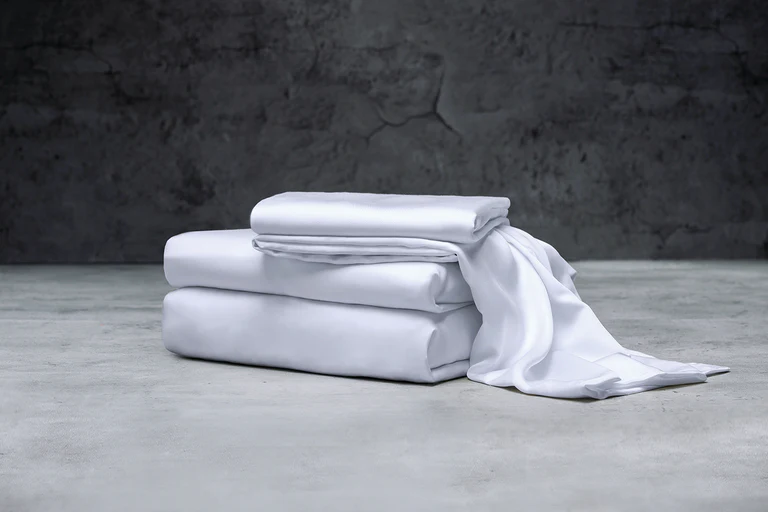Disadvantages of Lyocell Bedding
Lyocell bedding has become synonymous with sustainability and luxury. Yet, as with any textile innovation, there are trade-offs worth examining before making it a long-term choice.
লাইওসেল, often derived from sustainably sourced wood pulp such as eucalyptus or beech, has gained wide acclaim for its eco-friendly production and silky-soft touch. তবে, beyond its environmental narrative and tactile appeal, the fiber presents a set of disadvantages that buyers should carefully consider.
1. Moisture Sensitivity and Wrinkling
One of Lyocell’s primary strengths — its ability to absorb and release moisture efficiently — can also be its weakness. The same breathability that ensures comfort may lead to visible wrinkling after washing or sleeping. Without gentle care, sheets can lose their smooth finish, giving them a slightly rumpled appearance that contrasts with their intended luxury image.
2. Complex Care Requirements
Unlike traditional cotton or blended fabrics, Lyocell demands specific laundering methods. Hot water, high-speed spinning, or harsh detergents may damage its delicate structure, causing fibrillation (small fiber fuzzing) on the surface. The result is a subtle but noticeable change in texture — something that discerning users often find undesirable.
3. Price and Accessibility
Producing Lyocell involves a technically advanced solvent-spinning process. While this method is cleaner and more sustainable than conventional viscose production, it also makes the material more expensive. Consequently, Lyocell bedding tends to sit in a premium price bracket, limiting accessibility for budget-conscious consumers.
4. Durability and Longevity
Lyocell fibers are strong when dry but can lose tensile strength when wet, making them slightly less durable in frequent wash cycles compared to polyester or cotton blends. Prolonged exposure to direct sunlight may also cause gradual fading and weakening of the fibers. Over time, this can affect both the look and the performance of the bedding.
5. Environmental Realities
Though Lyocell production is known for its closed-loop process, which recycles over 99% of solvents used, it’s not entirely without environmental cost. The energy demands of maintaining that process, and the sourcing of wood pulp from non-certified forests, can dilute its green reputation if not carefully regulated.
Final Reflection
Lyocell remains one of the most progressive and luxurious textile fibers in the bedding industry. তবে, it’s essential to approach it with an informed perspective — balancing comfort, maintenance effort, খরচ, and environmental transparency. For conscious buyers, understanding these nuances is key to making a choice that aligns both with lifestyle and values.
For more insights into sustainable bedding innovations and textile craftsmanship, visit www.jueaihome.com.
